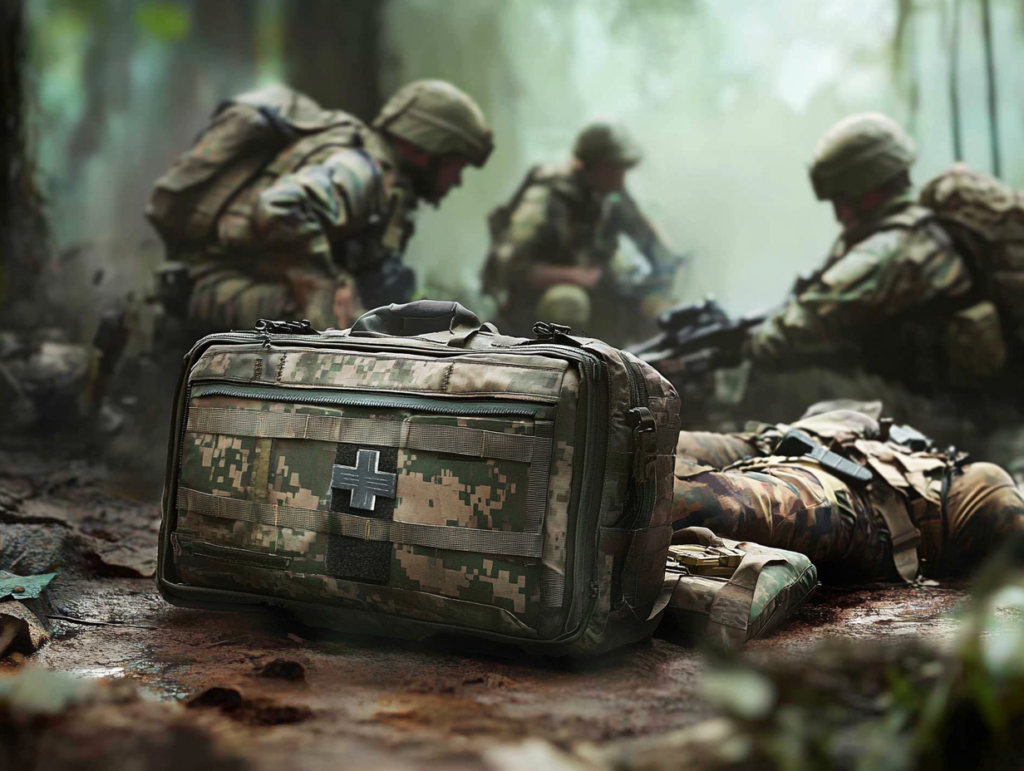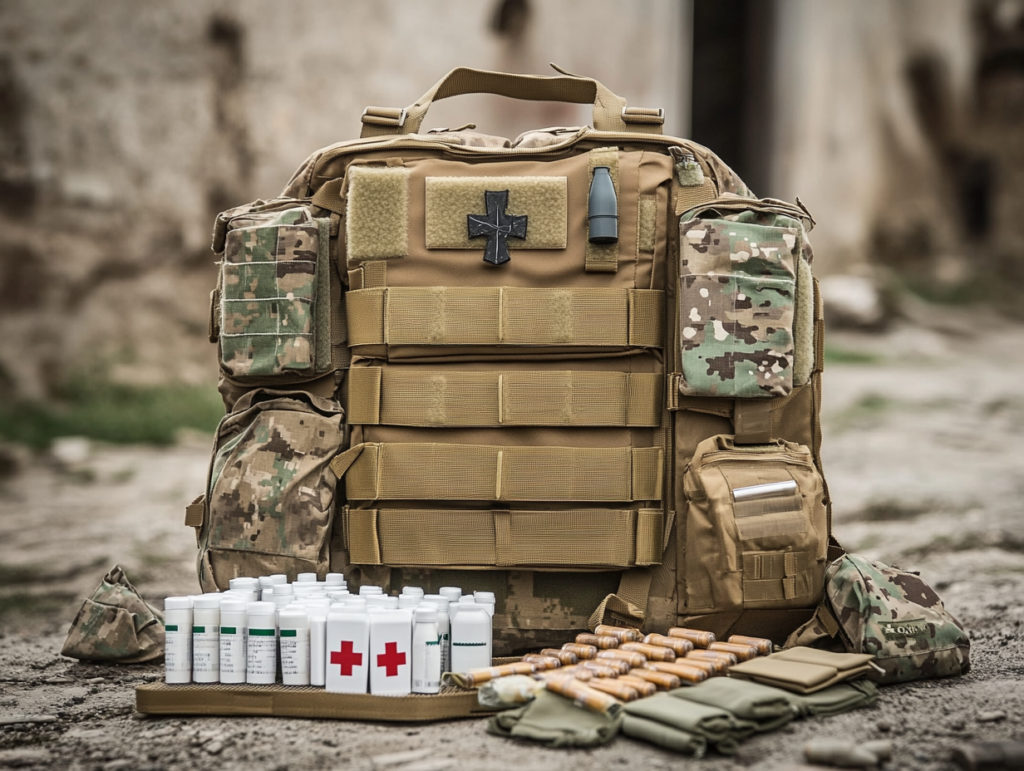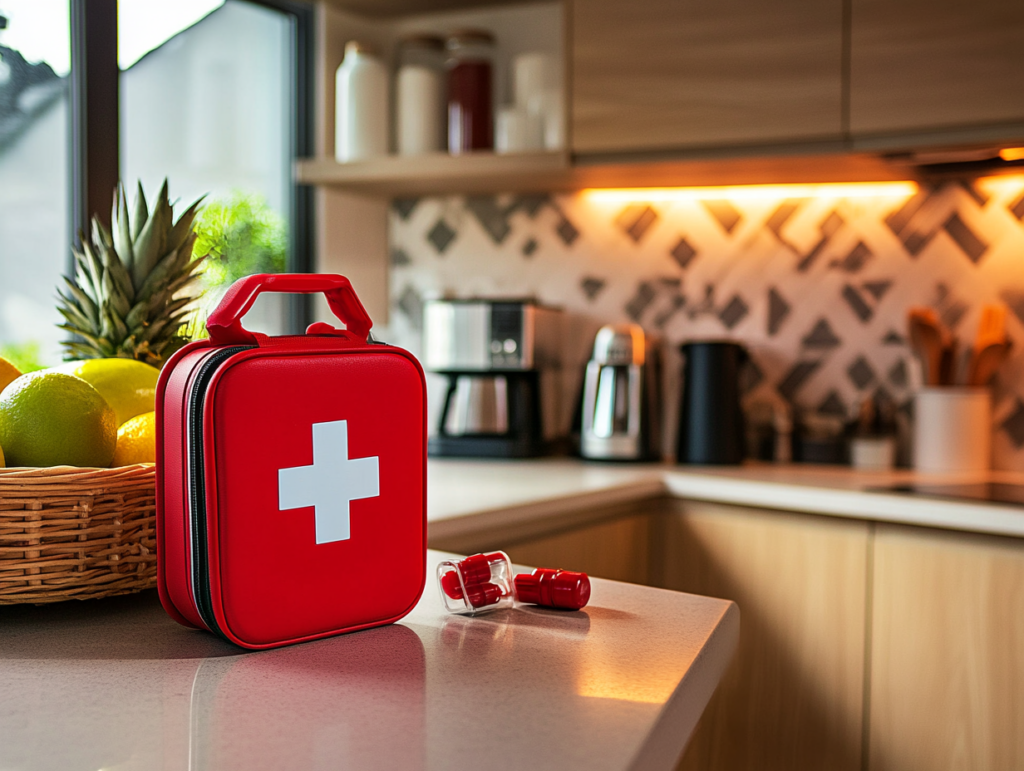- 1. Global Status of Tactical Medical Supplies Market
- 2. Growth in Military and Government Procurement Demand
- 3. Growing Civilian Interest in Tactical Medical Products
- 4. How New Materials and Technologies Enhance the Performance of Tactical First Aid Kits?
- 5. Future Directions for Tactical First Aid Kits
- Conclusion
In recent years, with the increasing complexity of global security situations and rising emergency medical needs, the tactical first aid kit has emerged as a highly efficient, portable, and powerful medical tool, gradually becoming a focal point in the market.
Whether it is soldiers on the battlefield, outdoor enthusiasts, or ordinary families in disaster-prone regions, tactical first aid kits have gained widespread recognition for their outstanding performance.
This article will provide a comprehensive analysis of the market trends for tactical first aid kits, covering the current global status of tactical medical supplies, the growing procurement demand from military and government agencies, the increasing civilian interest, how new materials and technologies are enhancing performance, and potential directions for future development.
By delving into these aspects, this article aims to provide readers with a clear and comprehensive market perspective.
1. Global Status of Tactical Medical Supplies Market
The tactical medical supplies market, as a key component of the emergency medical field, has shown significant growth in recent years. According to the latest data from market research institutions, the global first aid kit market reached USD 612 million in 2023 and is expected to rise to USD 996 million by 2030, with a compound annual growth rate (CAGR) of 7.3%.
This growth reflects the ongoing increase in demand for emergency medical equipment worldwide, as well as the dual value of tactical medical supplies in both military and civilian sectors.
Geographically, Europe currently holds the largest share of the global tactical medical supplies market at around 38%, thanks to its advanced medical systems and strong emphasis on emergency rescue.
North America follows closely, with the United States’ massive investment in military medical supplies driving the market growth. Although Asia-Pacific, particularly China, started later, it has experienced rapid development in recent years.
By 2023, China’s tactical medical supplies market had reached millions of dollars, and by 2030, its global market share is expected to increase further, showing great market potential.
Various factors are driving this market growth. In the military sector, tactical first aid kits are seen as a “lifeline” for soldiers, and their demand continues to rise with the complexity of modern warfare.
In the civilian sector, increasing public awareness of safety and emergency preparedness has opened up new growth opportunities for tactical medical supplies. Furthermore, frequent natural disasters and sudden incidents worldwide have further fueled the demand for high-performance emergency medical equipment.
2. Growth in Military and Government Procurement Demand
Military and government agencies, as key consumers of tactical medical supplies, directly drive the rapid development of the market through their increasing procurement needs.
On the modern battlefield, a soldier’s survival rate is closely linked to the performance of their emergency equipment, and the tactical first aid kit plays a crucial role in this process.
1. Military Demand Drivers
The nature of modern warfare has changed profoundly, shifting from traditional trench warfare to high-mobility, decentralized combat modes. This shift has raised the requirements for tactical first aid kits: they must be not only fully functional but also lightweight, durable, and easily deployable.
For example, in counter-terrorism operations or peacekeeping missions, soldiers may be injured far from rear support, and the immediate medical treatment capabilities of tactical first aid kits become a life-or-death factor.
It is estimated that the U.S. military spends over billions of dollars annually on tactical medical supplies, and other military powers like Russia, China, and the U.K. are also continually increasing their procurement efforts.
2. Government Agency Investment
In addition to the military, government agencies’ demands in public safety and emergency management are also growing rapidly. Police forces, fire departments, and disaster rescue teams often operate in high-risk environments, and the portability and efficiency of tactical first aid kits make them indispensable equipment.
For instance, in natural disasters like earthquakes or floods, rescue personnel need to provide initial treatment to the injured under harsh conditions, and the multi-functional design of tactical first aid kits perfectly meets this need.
3. Procurement Trends: Lightweight and Smart
Military and government agencies are increasingly inclined toward lightweight and smart tactical first aid kits. Traditional first aid kits tend to be bulky and inconvenient to carry, while modern products use high-strength fibers and modular designs to significantly reduce weight while retaining or even enhancing functionality.
For example, some military tactical first aid kits weigh less than 1 kg yet include various essential items such as tourniquets, bandages, and burn dressings. Additionally, the addition of smart features, such as built-in vital sign monitoring sensors, has become a new trend in procurement.
3. Growing Civilian Interest in Tactical Medical Products
In recent years, tactical medical products are no longer confined to the military sector, and their appeal in the civilian market is rapidly increasing. From outdoor sports enthusiasts to ordinary families, tactical first aid kits are becoming an essential choice for emergency preparedness due to their practicality and reliability.
1. Outdoor Sports and Adventure Demand
For outdoor enthusiasts engaging in activities like hiking, camping, and mountaineering, accidental injuries are inevitable risks. The compact size and comprehensive functionality of tactical first aid kits make them a staple in outdoor gear.
For example, a tactical first aid kit specifically designed for adventurers may include hemostatic gel, waterproof bandages, and emergency signaling devices, providing reliable medical support in remote areas. The rapid growth of the global outdoor sports market directly drives an increase in the sales of tactical first aid kits in this sector.
2. Disaster Emergency Preparedness
The frequent occurrence of global natural disasters has further heightened public interest in tactical first aid kits. During emergencies such as earthquakes, hurricanes, or floods, medical resources are often in short supply, and a family’s own tactical first aid kit can play a vital role at critical moments.
For example, residents of disaster-prone countries like Japan and the U.S. are increasingly adding tactical first aid kits to their household emergency supplies, contributing to the rapid expansion of the civilian market.
3. Potential and Challenges in the Civilian Market
The rise of the civilian market has created new growth opportunities for tactical medical supplies but also presents challenges. On one hand, consumers are highly sensitive to price, requiring companies to find a balance between performance and cost.
On the other hand, civilian users have lower professional requirements for the products, and how to develop simple and easy-to-use products for this group becomes a challenge for manufacturers. Despite these challenges, the civilian market’s potential cannot be underestimated as safety awareness continues to spread.
4. How New Materials and Technologies Enhance the Performance of Tactical First Aid Kits?
Technological advancements have injected new vitality into the performance improvements of tactical first aid kits. From lightweight materials to the integration of smart devices, modern tactical first aid kits are undergoing a technological revolution.
1. Application of New Materials
- Lightweight and Durability: Traditional first aid kits often use metal or hard plastic shells, but modern products utilize materials such as carbon fiber and high-strength nylon, reducing weight by 30%-50% while offering higher compression and waterproof capabilities.
- Antibacterial and Smart Materials: To prevent infection, new first aid kits often use antibacterial coatings on their inner linings and tools. In addition, some products use temperature-sensitive materials that automatically adjust the internal temperature based on the environment, ensuring the stability of medicines.
- Sustainable Materials: As environmental awareness grows, some manufacturers are exploring biodegradable materials to reduce the environmental impact of discarded first aid kits.
2. Technological Breakthroughs
- GPS and Remote Medical Care: High-end tactical first aid kits have integrated GPS systems to quickly locate injured individuals during emergencies and use telemedicine technologies to connect with doctors in real-time. For example, a certain military first aid kit can transmit injury data via satellite communication on the battlefield, improving the efficiency of medical treatment.
- Smart Sensors: Built-in vital sign monitoring sensors can detect heart rate, blood pressure, and other indicators in real time, transmitting the data to mobile devices to provide rescuers with scientific support.
- Modular Design: The modular design allows users to freely combine medical components based on mission requirements, such as adding a burn module or a fracture stabilization device, significantly enhancing flexibility.
3. Technology Applications Examples
For instance, the U.S. military’s “IFAK” (Individual First Aid Kit) includes not only traditional medical tools but also smart tourniquets and portable pulse oximeters in its latest version. This technological upgrade has significantly improved the success rate of battlefield first aid and offers valuable insights for civilian products.
5. Future Directions for Tactical First Aid Kits
Looking ahead, the development of tactical first aid kits will focus more on intelligence, personalization, and multi-functionality to meet increasingly diverse demands.
1. Intelligent and Automated
The introduction of artificial intelligence (AI) and machine learning will enable tactical first aid kits to perform preliminary diagnostic functions. For example, future first aid kits may automatically scan wounds, recommend the best treatment plan, and even administer medications through an automatic injector, reducing the burden on non-professional users.
2. Personalized Customization
Different scenarios present distinct emergency medical needs, and future tactical first aid kits will emphasize customization. Soldiers may require modules focused on hemostasis and trauma care, while outdoor enthusiasts might need tools for hypothermia prevention and infection control. By integrating personal health data, first aid kits can provide tailored solutions for specific users.
3. Multi-functional Integration
The future of tactical first aid kits will not only focus on medical functions but also incorporate communication, navigation, and even small energy devices, transforming them into true multi-functional survival tools. For example, first aid kits featuring solar-powered chargers and distress signal emitters have already appeared in some prototype products.
4. Sustainable Development
Environmental concerns will be a key trend in future development. Reusable medical modules, biodegradable packaging materials, and low-energy smart devices will reduce the environmental footprint of tactical first aid kits, promoting the sustainable development of the industry.
Conclusion
The market for military tactical first aid kits is experiencing rapid growth. The ongoing global market expansion, increasing procurement by military and government agencies, rising civilian demand, and widespread application of new materials and technologies are shaping the prosperity of this industry.
In the future, with the further advancement of intelligence and personalization, tactical first aid kits will play an even more important role in the military, civilian, and emergency sectors.
What do you think the future direction of tactical first aid kits will be? Feel free to share your insights in the comments or join us in exploring more possibilities in this field!


